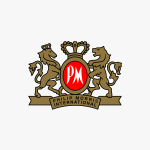Philip Morris Q4 2022 Earnings Report
Key Takeaways
Philip Morris International (PMI) reported its Q4 and Full Year 2022 results, demonstrating growth in key areas despite a challenging operating environment. The company's focus on smoke-free products is paying off, with this category now accounting for a significant portion of total net revenues. Strategic acquisitions, such as Swedish Match, are expected to further drive the company's transformation.
Total shipment volume increased by 1.2%, driven by a 26.1% increase in HTU shipments.
Net revenues from smoke-free products accounted for 36.0% of total net revenues.
Total IQOS users at quarter-end estimated at approximately 24.9 million.
PMI announced a long-term collaboration with KT&G to commercialize KT&G’s innovative smoke-free devices and consumables on an exclusive, worldwide basis (excluding South Korea).
Revenue by Geographic Location
Forward Guidance
PMI forecasts for the full year 2023, including an expected organic top-line growth and currency-neutral adjusted diluted EPS growth, despite inflationary pressures and transitory impacts related to ILUMA deployment.
Positive Outlook
- Organic top-line growth of 7% to 8.5%.
- Currency-neutral adjusted diluted EPS growth of 7% to 9%.
- Continued strong growth from Swedish Match’s existing operations, underpinned by strong shipment volume growth for ZYN in the U.S.
- HTU shipment volume of 125 to 130 billion units, reflecting an acceleration in growth versus 2022 on a total PMI basis.
- Wellness and Healthcare segment net revenues of around $300 million.
Challenges Ahead
- Continued global inflationary pressures, primarily impacting cost of sales for the combustible tobacco business.
- The continued transitory impacts associated with the ILUMA roll-out, including the margin impact of accelerated device replacements and higher initial costs of devices and consumables.
Revenue & Expenses
Visualization of income flow from segment revenue to net income
Historical Earnings Impact
Analyze how earnings announcements historically affect stock price performance

